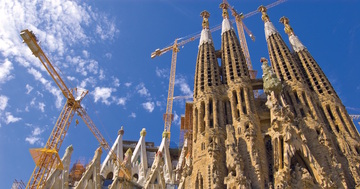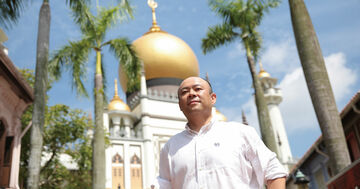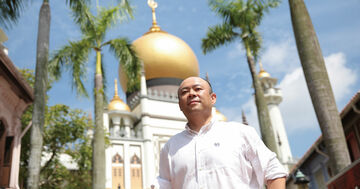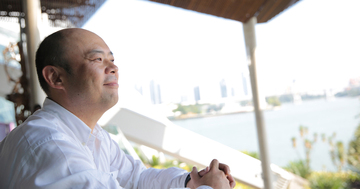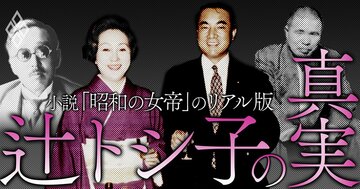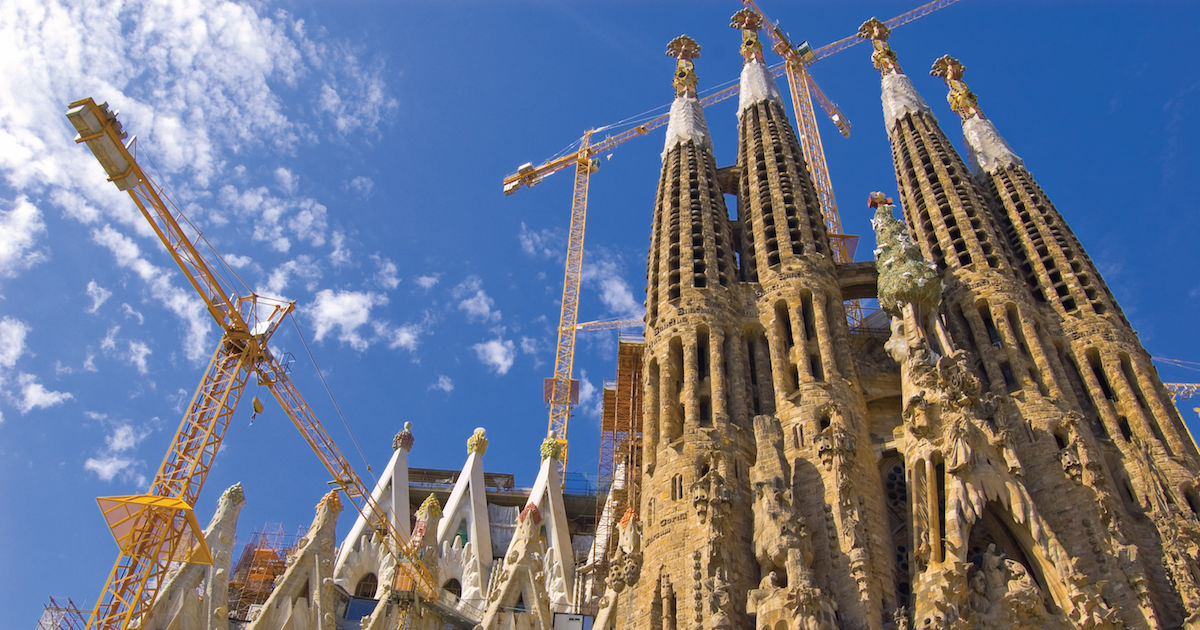 Photo: iStock / Gettyimages
Photo: iStock / Gettyimages
For me, the greatest person in history is Spanish architect Antoni Gaudí (1852-1926).
Perhaps many of you have heard of Gaudí as the designer and architect of the Sagrada Familia, a church of which the construction began in 1882 and remains unfinished to this day.
When I first visited the Sagrada Familia, I was surprised by how much of a "construction site" it was — cranes were swinging overhead and sparks were flying all over the place. I wore a safety helmet as I walked around the facility.
Surely there cannot be any other place in the world where visitors pay such an admission fee and are shown a site where construction is in progress.
After finishing my tour of this incomplete work, I remember feeling moved by Gaudí's persistence.
Most people may think of the Sagrada Familia as a building with four towers reaching high into the sky. However, Gaudí's original vision was to have additional slimmer towers around them, as well as a tower that is the largest in the middle.
Over 100 years have past, and eight towers have been constructed. However, the plan is to increase that number to 18. Each tower is to feature its own motif, such as each of the Twelve Apostles, Virgin Mary, and Jesus Christ. The entire structure itself is an expression of Christianity.
What is astonishing is Gaudí's vision. The towers of the Twelve Apostles are being built as bell towers, designed by Gaudí from the beginning such that when they are complete, they will fulfill a function similar to a piano keyboard or a pipe organ.
In short, Gaudí designed the Sagrada Familia not only as a church but also as a musical instrument.
Unfinished in his era: the work left by Gaudí
Trying to convey the true essence of Christianity in words would have required vast amounts of energy and time.
Gaudí, however, with his artistic concept of making the building itself into a musical instrument, expressed Christianity in a manner that could be felt instantly and intuitively by even people who cannot read or who are not familiar with the Bible.
"We ring the bells, bong, bong, to show our love for God. And having done that, surely we will be greeted with God's love as well." It is an accurate expression of the essence of Christianity.
In contrast, the end of Gaudí's life was a tragic one. In his final years, he built a house next to the construction site. He spent his personal wealth and over 10 years entirely devoted to the church's construction. Perhaps he did not even eat regular meals. Gaudí, who became a weary old man, was hit by a streetcar. Although he was still breathing, he was mistaken for a beggar, and his life ended.
Afterwards, however, a succession of people appeared to carry on Gaudí's legacy. Despite the fact that the construction was estimated at the time to require 300 years for completion, it is now scheduled to be finished in 2026, thanks to generous donations and the power of state-of-the-art technology.
That is not all. As a major tourism site, the Sagrada Familia has had a significant impact on the regional economy. It has been a source of courage and hope for many artists as a symbol of the magnificent work that humans can create.
So Gaudí has enriched the hearts of not only Christians but also local citizens and people all over the world. Despite knowing that his work would not be completed during his lifetime, he has proven, through time, that his vision would eventually be realized.
With that said, I feel that the Sagrada Familia may be better in its uncompleted state. I have a feeling that leaving it unfinished could perhaps better convey Gaudí's ideas and their magnificence.
It is the ultimate satisfaction with
oneself that makes for a happy world
Over the course of this series, I have introduced quite a few different topics — some of which I may not be able to fully realize in my lifetime. But I think that's alright. To borrow a phrase from my older brother, "ultimate satisfaction with oneself" is enough.
The phrase "satisfaction with oneself" may sound as though it has a negative connotation, but it is different from the notion that "All that matters is for me to be happy." I believe that we can get much more satisfaction from the happiness of the people whom we love than from only thinking about ourselves.
I would rather that the people around me — my loved ones, family members, coworkers, and the people in my community — become more and more happy. I would even think that if this way of thinking were to spread throughout the world, I would be very satisfied. Considering all this, ultimate satisfaction with oneself is very different from the belief that all that matters is one's own happiness.
In the end, nevertheless, the question at which we arrive is still "Am I satisfied with myself?" If, on our deathbed, we can think to ourselves, "Ah, it has been a fun life. I think I have helped the people around me," that is enough — that and thinking "I wonder how many people enjoyed being with me?"
We never know when "that day" will come. I hope to connect with lots of people who share my view and have aspirations, and I hope to have a fun time doing so. It is not a matter of being happy because I have enough money or unhappy because I do not have enough money.
In my own way, I hope to put my soul into supporting people who uncompromisingly take on new challenges and to leave behind a legacy that will have an impact on people. My journey is far from over.
Editor's note: This is the final article in the "Son-ke no Oshie" series. We would like to earnestly thank our loyal readers who have followed it over the past year and a half.

Photo: iStock / Gettyimages
